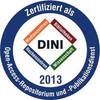Preview |
PDF, English
Download (17MB) | Terms of use |
Abstract
Photon-induced WW production in proton-proton collisions at the Large Hadron Collider provides a clean environment to probe the electroweak structure of the Standard Model. Quasi-real photons, emitted by the electromagnetic fields of the protons, collide peripherally. The protons that remain intact scatter into the forward region of the experiment, where the ATLAS Forward Proton (AFP) detectors can measure their kinematic properties. This enables the full kinematic reconstruction of the WW system, independent of the central ATLAS detector. This thesis presents the measurement of the semileptonic photon-induced WW production in Run 2 of LHC at a centre-of-mass energy of √s = 13 TeV, corresponding to an integrated luminosity of 14.6 fb−1. Two reconstruction methods for the hadronically decaying W boson are studied: the resolved and boosted topologies. Both reconstructions are used to test the sensitivity to potential anomalous quartic gauge couplings. Data-driven techniques are employed to estimate background contributions, with cross-checks between different methods confirming consistency. Good agreement is observed between the background predictions and the observed number of events in data. The results are interpreted within the framework of the Standard Model Effective Field Theory, and are used to constrain the coefficients of dimension 8 operators. Confidence intervals for the anomalous quartic gauge couplings are derived, confirming existing limits.
| Document type: | Dissertation |
|---|---|
| Supervisor: | Dunford, apl. Prof. Dr. Monica |
| Place of Publication: | Heidelberg |
| Date of thesis defense: | 14 July 2025 |
| Date Deposited: | 29 Jul 2025 13:40 |
| Date: | 2025 |
| Faculties / Institutes: | The Faculty of Physics and Astronomy > Kirchhoff Institute for Physics |
| DDC-classification: | 530 Physics |









